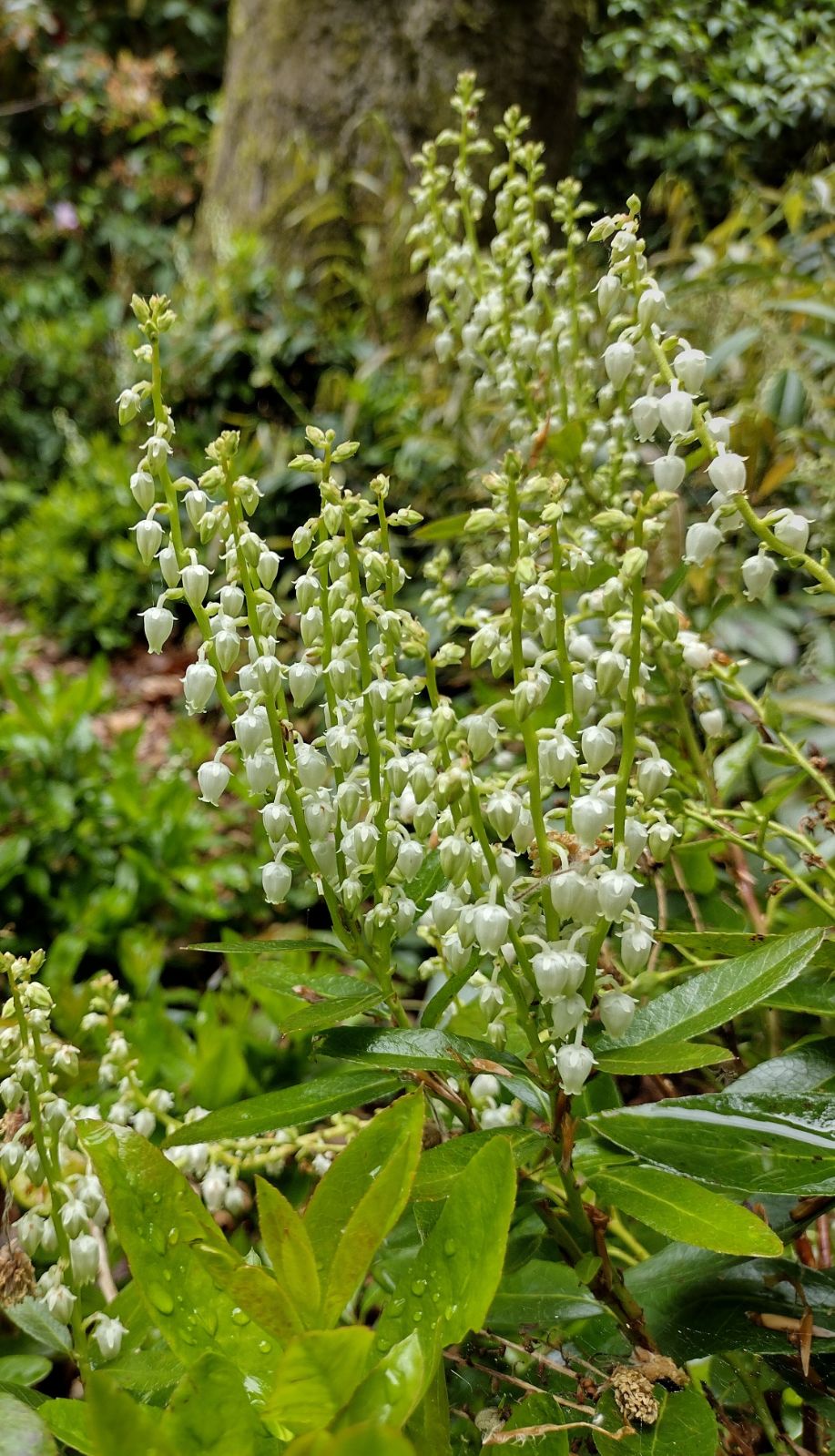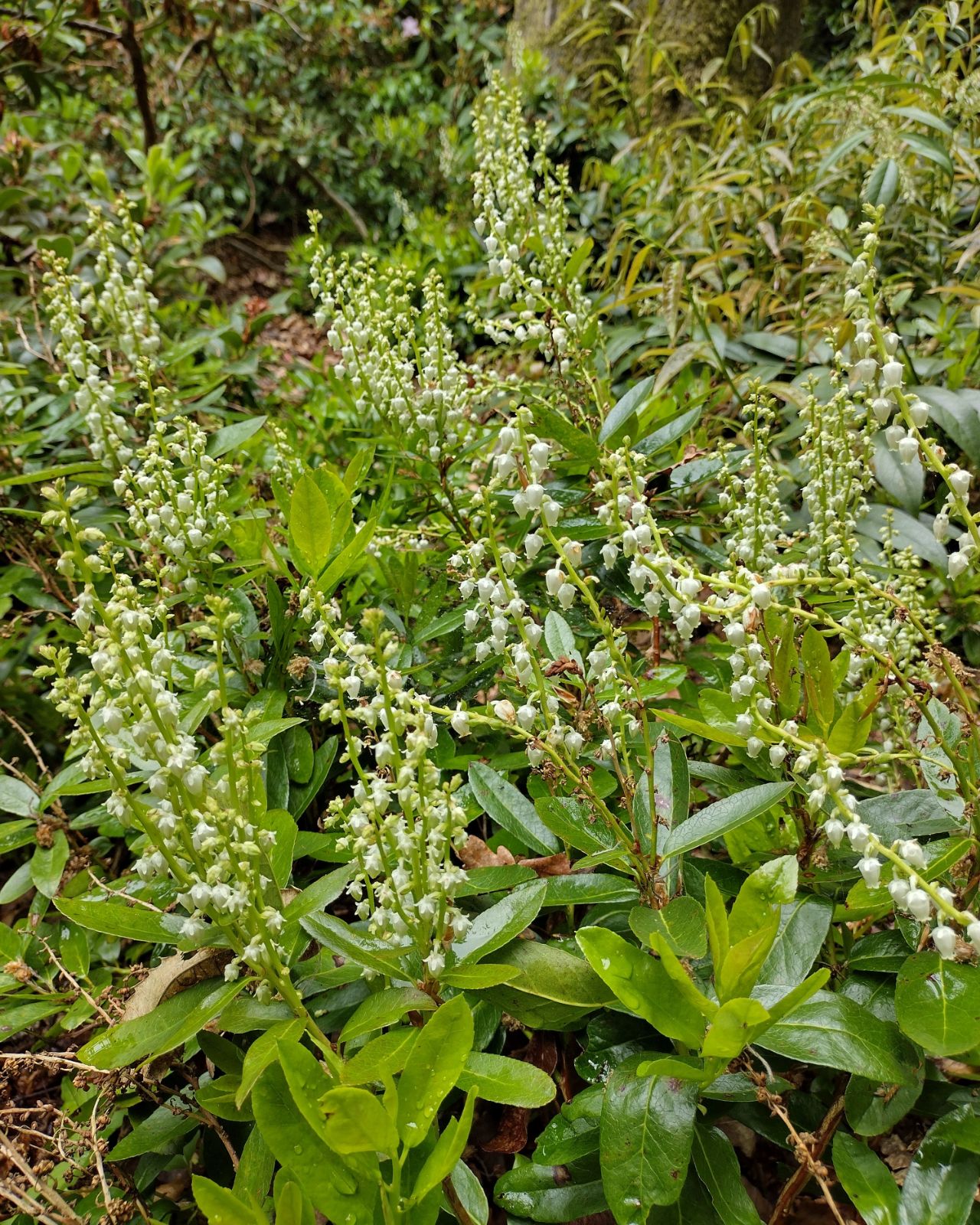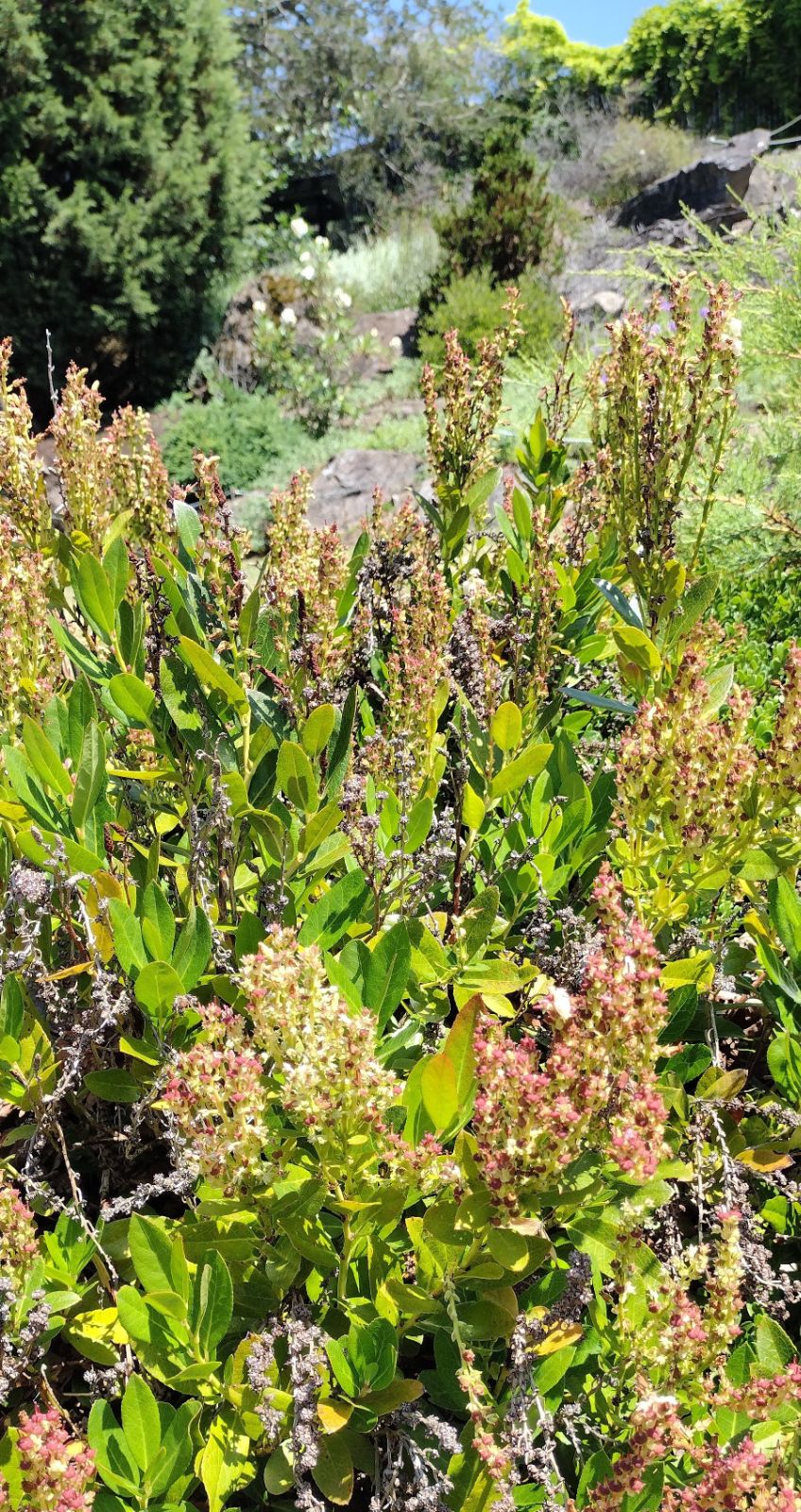Leucothoë davisiae
Credits
Article from Bean's Trees and Shrubs Hardy in the British Isles
Recommended citation
'Leucothoë davisiae' from the website Trees and Shrubs Online (treesandshrubsonline.
Genus
An evergreen shrub 1 to 3 ft high in cultivation, of neat, very sturdy habit; branches erect, stiff, perfectly glabrous. Leaves ovate-oblong, rounded or slightly heart-shaped at the base, short-pointed or blunt at the apex, lustrous dark green, of firm texture, 11⁄4 to 21⁄2 in. long, 3⁄4 to 1 in. wide, very slightly and evenly toothed stalk 1⁄8 to 1⁄4 in. long. Flowers produced in mid or late June in a cluster of erect racemes springing from the end of the shoot and its upper leaf-axils, each raceme 2 to 4 in. long, and furnished with short, scattered bristles. Corolla nodding, pitcher-shaped, white, 1⁄4 in. long, five-toothed. Sepals short, ovate, edged with a few glandular teeth; flower-stalk 1⁄8 in. long. Bot. Mag., t. 6247.
Native of the Sierra Nevada, California at 3,000 to 8,000 ft, and of neighbouring parts of Oregon: discovered and introduced in 1853 by William Lobb, for Messrs Veitch, and at first distributed by them as “Leucothoë lobbii”. Subsequently found by Miss N. J. Davis, after whom it was named. It is, perhaps, the most beautiful in the genus, because its erect, terminal cluster of racemes stands well above the foliage. It thrives very well in the neighbourhood of London.




